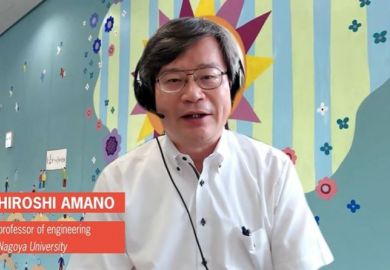Harnessing the atom enriches lives, but its dark side remains, says Jack Harris
The genesis of this book occurred in the fertile mind of Bernard Cohen, a retired professor of physics at the University of Pittsburgh.
Cohen had an international reputation for quantifying the risks of many aspects of modern life, and he reached a wide audience with his books and papers on this subject.
He was dismayed by the public's general lack of appreciation of the benefits that radiation technology brought to many aspects of everyday life, and he persuaded the Nobel laureate Glenn Seaborg to write a popular book on the subject. Sadly, Seaborg died before the project got under way, but the baton was picked up by Alan Waltar, a past president of the American Nuclear Society.
Waltar is a great admirer of Marie Curie, and he included a tribute to her in the title of his book, Radiation and Modern Life: Fulfilling Marie Curie's Dream . It is then easy to imagine how pleased he was when Hélène Langevin-Joliot, Curie's granddaughter, herself a distinguished nuclear physicist, agreed to write an introduction to the book. I, too, admire Curie, but Waltar and Langevin-Joliot go a little over the top with their praise of the good lady, implying that she combined the scientific insight of Einstein with the virtue of Mother Teresa. Curie was first and foremost a brilliant experimentalist who added little herself to the theoretical understanding of the structure of the atom. She was certainly no Einstein (who is?), and her torrid love affair with the married fellow scientist, Paul Langevin, damaged her reputation for rectitude.
As for the book itself, first the good news. Waltar has produced an authoritative and comprehensive account of what used to be called the "peaceful" uses of nuclear science. He concentrates on the medical uses of radioactive isotopes and is not shy about relating his own medical history, giving details of his own treatment for prostate cancer. The author discusses other fields where radiation technology has proved of immense value, such as agriculture, food preservation, electrical generation, transport, space technology, environmental protection, archaeology, lighting and the arts. He calculates that radiation technology contributes more than $420 billion (Pounds 240 billion) to the US economy and provides more than 4.4 million jobs.
At this point, I have to confess to having some reservations about the tenor of the book, its conclusions and the motives for writing it. I find it very hard to understand how it is possible to write a book titled Radiation and Modern Life without devoting at least a chapter or two to the production and influence of nuclear weapons.
Of course, nuclear technology provides many benefits to man, far more than one might have realised before reading this book. But these benefits, however great, have no bearing on the virtue or otherwise of manufacturing and deploying nuclear weapons (or for that matter nuclear reactors). By way of comparison, we all benefit immeasurably from advances in chemistry in our daily lives, but this in no way justifies, or indeed has any relevance to, the ethics of producing chemical weapons, either as poisonous gas or as high explosives.
When Waltar does mention nuclear weapons, almost en passant , he consistently takes what could be regarded as a right-wing, or even a "redneck", attitude.
For instance, he boldly claims that the dropping of the bombs on Hiroshima and Nagasaki in 1945 saved a huge number of lives by shortening the war.
How does he know this? In the summer of 1945, Japan was already defeated, its air defences had been eliminated and 60 per cent of its major cities had been 60 per cent destroyed by conventional bombing. Could the power of the atom not have been demonstrated by dropping atomic bombs on wasteland or in Tokyo Bay?
In other parts of the book, Waltar seems to imply that civil nuclear programmes have not been used as a front for the production of nuclear weapons. Has he forgotten India's "peaceful" nuclear explosion of 1974 that utilised plutonium from a Canadian-type reactor and heavy water from the US? Does he believe that Iran, with all its oil and gas, really needs a nuclear power station?
He even defends the US's part in the nuclear arms race during the Cold War when America and the Soviet Union accumulated between them some 70,000 nuclear weapons, equal in firepower to a million Hiroshima bombs and the equivalent of 3 tonnes of TNT for every man, woman and child on the earth.
These right-wing fantasies of the author have quite spoiled for me a book that for the most part is attractively written, lively and informative.
Jack Harris is vice-chairman of British Pugwash and a fellow of the Royal Society. He spent 35 years working in Britain's civil nuclear power industry.
Radiation and Modern Life: Fulfilling Marie Curie's Dream
Author - Alan E. Waltar
Publisher - Prometheus Books www.gazellebookservices.co.uk
Pages - 336
Price - £19.99
ISBN - 1 59102 50 9



